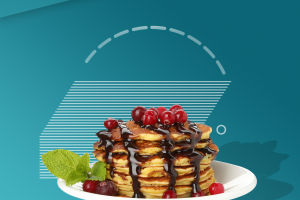Hey Lykkers! Fruit cake—one of those classic desserts that instantly brings to mind festive holidays and cozy gatherings. But this timeless treat isn't just for the holiday season!
Loaded with dried fruits, nuts, and often a hint of spices, fruit cake has been a favorite across generations, with each culture adding its own twist to the mix.
The History of Fruit Cake
Fruit cake has an impressively long history, dating back to Roman times. The Romans made a primitive version called "satura," which included barley, pomegranate seeds, nuts, and raisins. This was considered an energy-packed meal for soldiers heading to battle.
In the Middle Ages, fruit cake evolved with the addition of spices and honey, and by the 18th century, it had become a popular treat across Europe. It was especially favored for celebrations, where its richness was a symbol of wealth. Fruit cakes were also known to be baked for weddings and other important occasions because they could be stored for months due to their high sugar content.
What Makes Fruit Cake So Special?
1. The Perfect Combination of Flavors: The beauty of fruit cake lies in its balanced blend of sweet, tangy, and nutty flavors. The sweetness of dried fruits like raisins, apricots, and cherries contrasts with the crunchy texture of nuts, while spices like cinnamon and nutmeg give it warmth.
2. Long Shelf Life: Fruit cake is known for its impressive shelf life. Thanks to its dense texture and the high sugar content from dried fruits, it can last for months if stored properly. Some people even "age" their fruit cake for a more robust flavor!
3. Customizable to Your Tastes: Fruit cake is highly versatile. You can make it with your favorite fruits and nuts.
Baking the Perfect Fruit Cake
Making a fruit cake is not as complicated as it might seem! Here are some tips to get you started:
1. Choose Your Fruits: The base of a fruit cake is dried fruit, so select a variety of your favorites. Common choices include raisins, dried apricots, dried cherries, currants, and dates. You can also add candied citrus peel for extra zing.
2. Soak the Fruit: One of the key secrets to a moist fruit cake is soaking the dried fruits in a liquid, often for several hours or overnight. You can use water, fruit juice, or, for a richer flavor.
3. Use Nuts for Texture: Add chopped nuts like walnuts, almonds, or pecans to your cake batter. They provide a satisfying crunch and complement the sweetness of the fruit.
4. Spices for Warmth: Ground cinnamon, nutmeg, allspice, and cloves are the most common spices used in fruit cake, giving it a cozy, holiday-like warmth. You can adjust the amount based on your preferences.
5. Baking Low and Slow: Fruit cakes are best baked at a low temperature for a longer period. This ensures the cake cooks evenly and prevents it from drying out. To keep the top from browning too quickly, cover it with foil after the first hour of baking.
Creative Twists on Fruit Cake
1. Tropical Fruit Cake: Replace traditional dried fruits with tropical varieties like mango, pineapple, and papaya for a tropical twist.
2. Chocolate Fruit Cake: Add cocoa powder or melted chocolate to the batter for a rich, decadent take on the classic.
3. Vegan Fruit Cake: Substitute eggs with flaxseed or applesauce and use plant-based butter for a vegan-friendly version without compromising on flavor.
Fruit Cake All Year Long
While fruit cake often makes an appearance during birthday or weddings, this delightful dessert can be enjoyed any time of the year. Whether you bake it for a special occasion or simply as a sweet treat, fruit cake offers a nostalgic flavor that never goes out of style.
Fruit cake is more than just a festive dessert—it's a symbol of tradition, celebration, and timeless flavor. With its versatile recipe and ability to last for months, it's no wonder this cake has remained a favorite for centuries. No matter you like it dense and fruity or light with a hint of spice, fruit cake is a classic that can be tailored to any taste.


